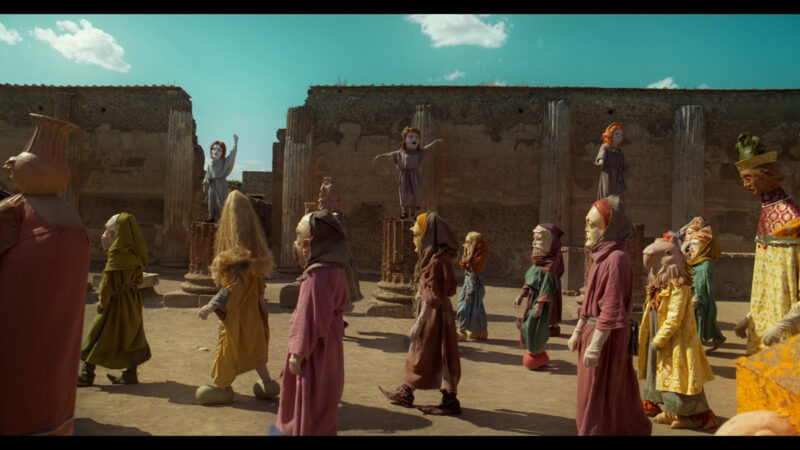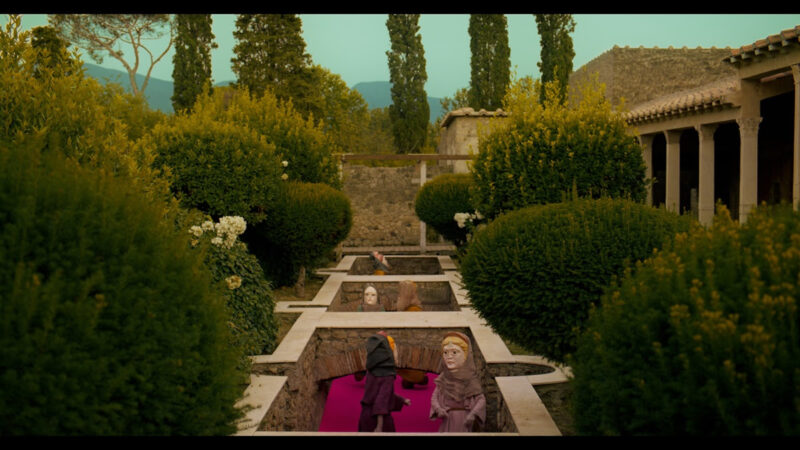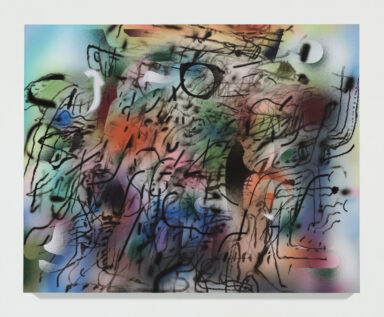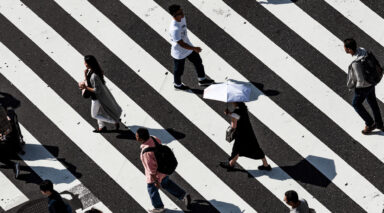Wael Shawky on show at Palazzo Grimani in Venice
On April 17, 2024, the solo exhibition of Egyptian artist Wael Shawky opened to the public at the Museo di Palazzo Grimani in Venice. Titled “I Am Hymns of the New Temples – أنا تراتیل المعابد الجدیدة,” the exhibition brings together Shawky’s filmic work “I Am Hymns of the New Temples,” created by the artist in 2023, along with a selection of multi-material sculptural works and drawings produced by Shawky between 2022 and 2024.
The exhibition is conceived as an ideal dialogue between different spaces and times, where contemporary artworks coexist with archaeological artifacts and the historical salons of Palazzo Grimani. The exhibition space guides visitors from the Camaron d’Oro to the Tribuna, also known as the Antiquarium or Chamber of Antiquities, which serves as the focal point of the palace and its narratives.
Wael Shawky reconfigures the four rooms of the Tribuna wing of the Museo di Palazzo Grimani as a narrative where the coexistence of multiple spaces and different times, historical events, and mythical narratives are evoked. Similar to the era of Giovanni Grimani, patriarch of Aquileia, who transformed their patrician residence into a stage where ancient Greek and Roman antiquity intersected with Renaissance ideals, Shawky transforms these rooms into a time machine, connecting them to engage visitors in a journey through memory and imagination.
The exhibition project, which includes Shawky’s film work “I Am Hymns of the New Temples” and a selection of drawings and multi-material works in bronze, ceramics, and glass, is conceived as a dialogue with the frescoes and decorations of the Palace. Contemporary artworks confront archaeological works to create a path from the Camaron d’Oro to the Tribuna, forming the historical and symbolic core of the Palace. The Tribuna is aligned with Shawky’s film work, suggesting a mirroring of two versions of the same story. While the narrative at Palazzo Grimani articulates themes of divine justice and the ascent of the soul to the Christian God, Shawky’s narrative emphasizes justice through the cycle of destruction and recreation, reflecting ancient Mediterranean legends that influenced modern European civilization.

Wael Shawky, a narrator of suspended cognitive and expressive processes between the documentable and the imaginable, evokes a dimension of culture and nature that is both factual and imaginative. He prepares us for a position of awareness and wonder towards the ancient and contemporary mechanisms through which historical, social, and cultural events have been interpreted and transmitted to us.
“I Am Hymns of the New Temples,” filmed among the ruins of an ancient city seemingly destroyed in 79 A.D. by the eruption of Vesuvius, which later resurfaced from its own ruins in 1748, tells the story of what makes Pompeii a true multiverse where reality and imagination are indistinguishable. It becomes an epic tale of the need to invent, tell, and transmit new stories, through which humans make sense of their desires, fears, and the unknown, and their impulse to relate material and spiritual, justice and injustice, end and beginning. This need is restored to us through the dimension of myth, more than any historical account, in its contradictory and irredeemable humanity.
In Shawky’s Pompeian narrative, not only do we remember that we have already become extinct and been reborn, but we also discover that she who the Greeks called Io became Isis in Egypt, just as her son-companion Epaphus became Osiris: stories refer to each other and overlap, like new temples in which to continue telling our stories.




